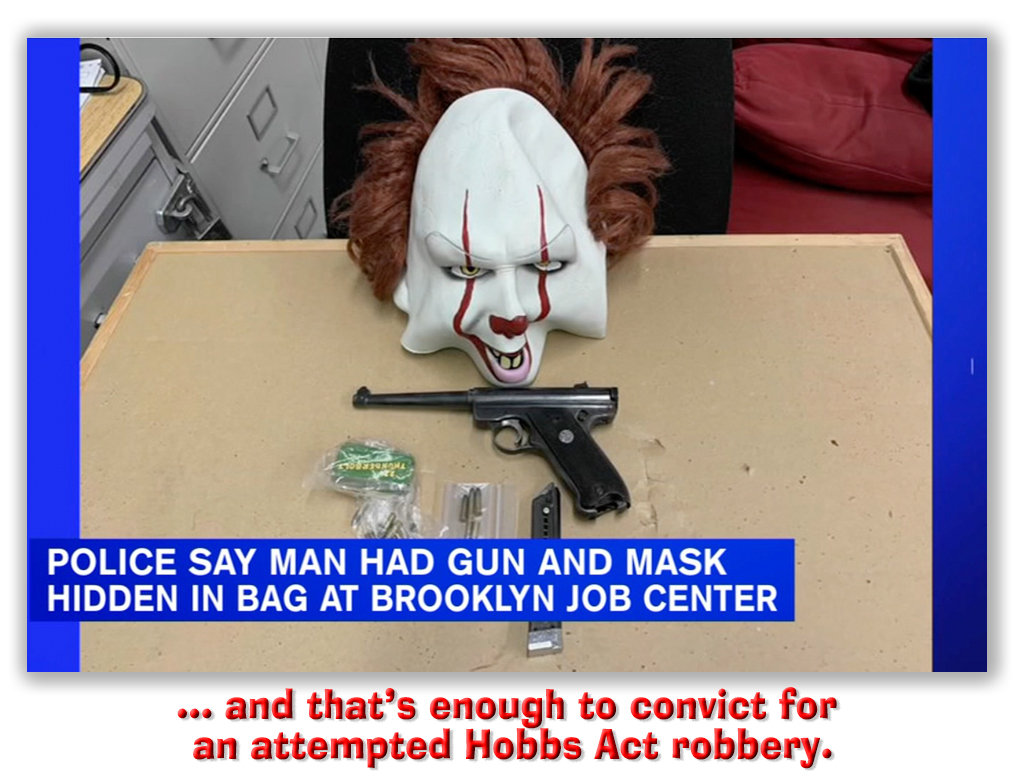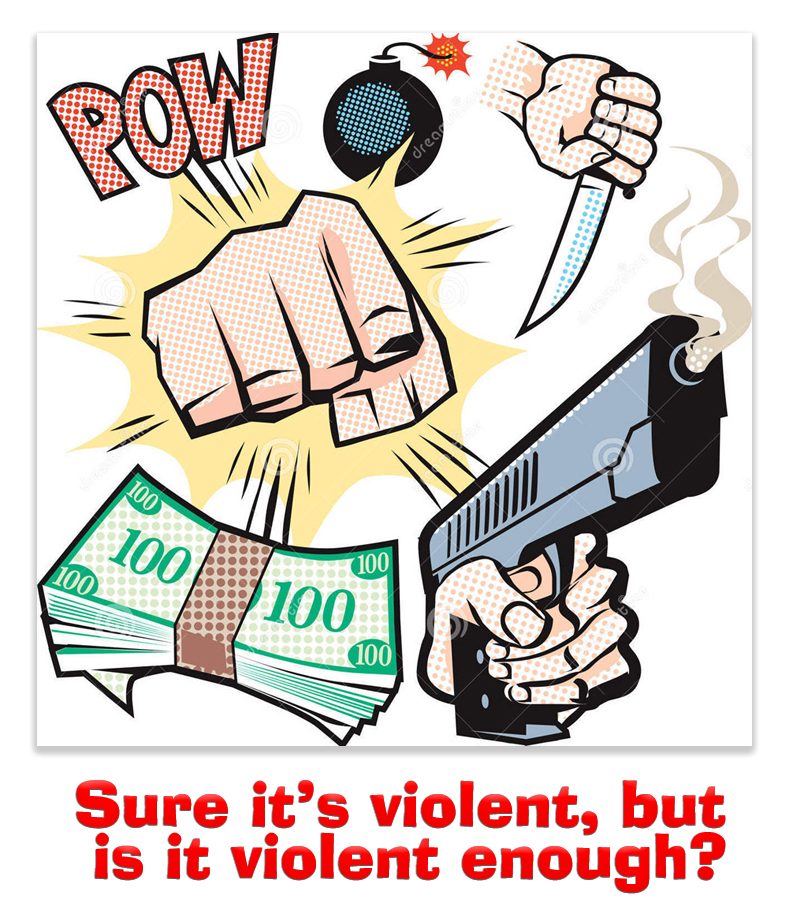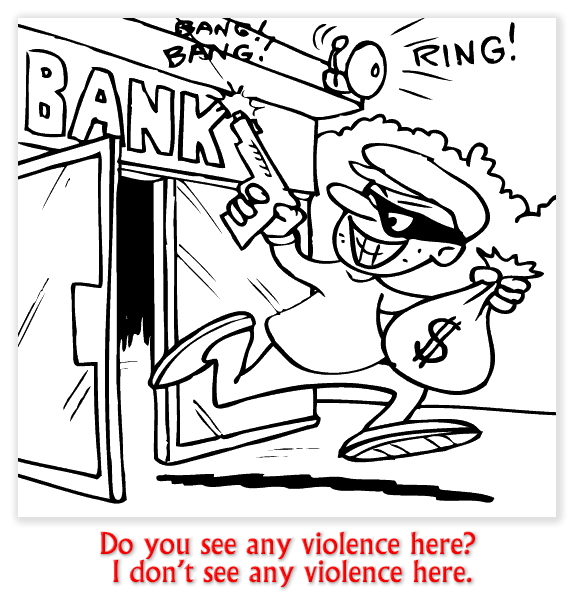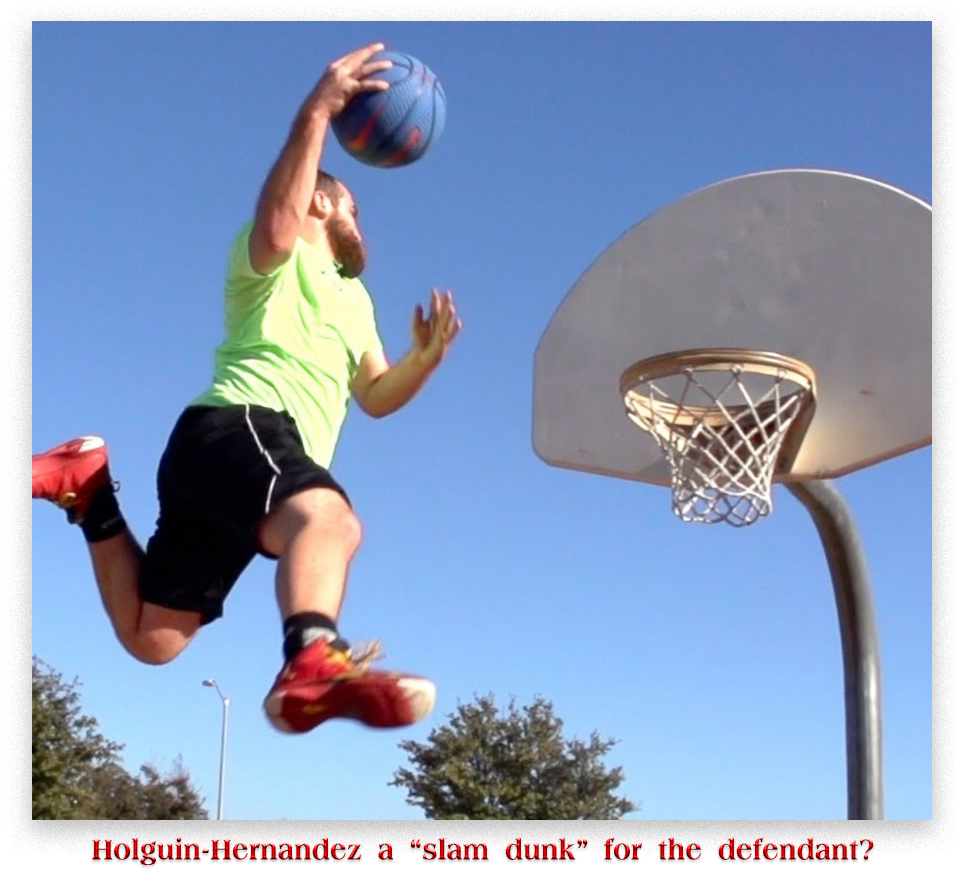We post news and comment on federal criminal justice issues, focused primarily on trial and post-conviction matters, legislative initiatives, and sentencing issues.

ANOTHER DISTRICT COURT HOLDS HOBBS ACT ROBBERY ATTEMPT DOES NOT SUPPORT § 924(C) CONVICTION
 A few weeks ago, I reported that an Eastern District of New York case, United States v. Tucker, held that an attempted Hobbs Act robbery did not support an 18 USC § 924 conviction for using a gun in a crime of violence.
A few weeks ago, I reported that an Eastern District of New York case, United States v. Tucker, held that an attempted Hobbs Act robbery did not support an 18 USC § 924 conviction for using a gun in a crime of violence.
The same reader who brought Tucker to my attention last week pointed me toward a late January Western District of New York decision that granted a 28 USC § 2255 post-conviction motion on the same grounds.
Tom Lofton was in the business of robbing drug dealers. He found that using a gun in his business was an effective way to make his point with his victims, which was that they should hand over their money and drugs. It worked quite well until the Feds caught him in 2004. He was charged with conspiracy to commit Hobbs Act robbery and two counts of attempted Hobbs Act robberies. He was also charged with three § 924(c) counts, one each attached to the conspiracy and both Hobbs Act attempts. Tom beat one of the § 924(c) counts at trial, but he was convicted on the other two, receiving 180 months for the conspiracy and attempts, but 84 consecutive months for the first § 924(c) and 300 more for the second § 924(c). All told, Tom received a 567-month sentence during which he should rethink his business model.
 After the Supreme Court’s 2019 decision in United States v. Davis, however, Tom rethought the § 924 convictions as well. He got permission from the Second Circuit to file a second § 2255 motion to attack his two § 924(c) counts as being unsupported by predicate crimes of violence. The government agreed that the first § 924(c), based on the conspiracy count, had to be dismissed, but it argued that the attempt-to-violate-the-Hobbs-Act count remained a crime of violence.
After the Supreme Court’s 2019 decision in United States v. Davis, however, Tom rethought the § 924 convictions as well. He got permission from the Second Circuit to file a second § 2255 motion to attack his two § 924(c) counts as being unsupported by predicate crimes of violence. The government agreed that the first § 924(c), based on the conspiracy count, had to be dismissed, but it argued that the attempt-to-violate-the-Hobbs-Act count remained a crime of violence.
The government’s thinking was quite linear: a Hobbs Act violation is a crime of violence. To be convicted of an “attempt” crime, one must intend to commit the underlying crime and take at least one step toward doing so. Since the defendant intended a crime of violence, the “attempt” crime must be a crime of violence as well.
A few weeks ago, however, Tom’s district court agreed with him, and dismissed both § 924(c) convictions.
The Hobbs Act is violated either by robbery or by extortion. The district court agreed that the Act is divisible between the two offenses, but held that within the definition of Hobbs Act robbery, the statute indivisible. The Act provides that “whoever in any way or degree obstructs, delays, or affects commerce or the movement of any article or commodity in commerce, by robbery or extortion or attempts or conspires so to do…” will be punished.
 Relying on Tucker, the district court ruled that an attempt to commit a Hobbs Act robbery could not be a crime of violence, because people have been successfully prosecuted in the past for attempted Hobbs Act robbery when no force was ever threatened or used. In one case cited by the court, a defendant was convicted because he had twice “reconnoitered the place contemplated for the commission of the crime and possessed the paraphernalia to be employed in the commission of the crime: loaded sawed-off shotguns, extra shells, a toy revolver, handcuffs, and masks…”
Relying on Tucker, the district court ruled that an attempt to commit a Hobbs Act robbery could not be a crime of violence, because people have been successfully prosecuted in the past for attempted Hobbs Act robbery when no force was ever threatened or used. In one case cited by the court, a defendant was convicted because he had twice “reconnoitered the place contemplated for the commission of the crime and possessed the paraphernalia to be employed in the commission of the crime: loaded sawed-off shotguns, extra shells, a toy revolver, handcuffs, and masks…”
The district court argued that prior decisions in other circuits that agreed with the government’s argument had confused “intent” with “attempt.” Just because a defendant intends to commit an act of violence does not necessarily mean the defendant has actually attempted to do so.
Because a defendant can violate 18 USC § 1951 by intending to commit the crime and taking a step toward completing the offense, even without any force threatened or used, an attempted Hobbs Act violation cannot support a § 924(c) conviction.
Tom’s two § 924(c) offenses were vacated.
United States v. Lofton, 2020 U.S. Dist. LEXIS 10764 (WDNY, Jan. 22, 2020)
– Thomas L. Root







